Top 10 Companion Plants for Peppers (With Pictures)
-
Pete Ortiz
- Last updated:
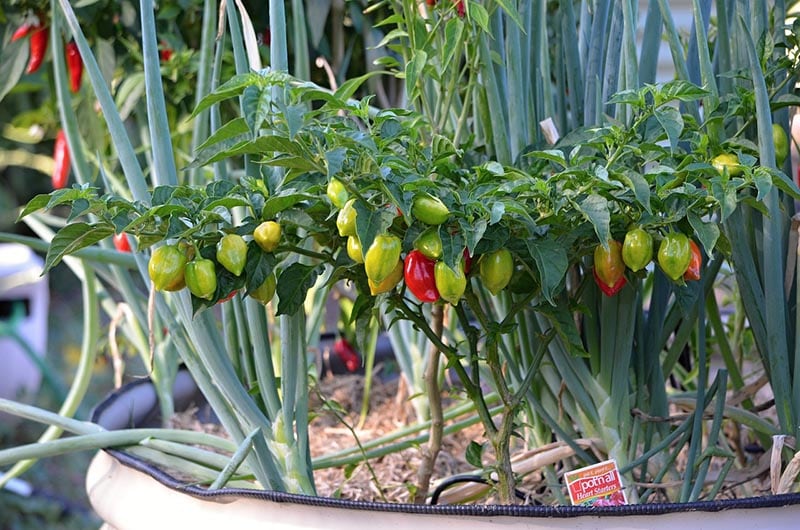
Peppers are an excellent vegetable that is very rewarding to grow in any garden if you provide the plant with adequate conditions and fulfill their needs. If you are looking to expand your garden and searching for a perfect plant to match the needs of your pepper, then you are in the right place. In the article below, we’ve included a list of the best companion plants for planting next to peppers that won’t harm the plant and will only help them thrive.
In case you need additional information on this, there is also a list of companion plants, vegetables, and herbs you should avoid planting near peppers.
The 10 Companion Plants for Peppers
1. Geraniums
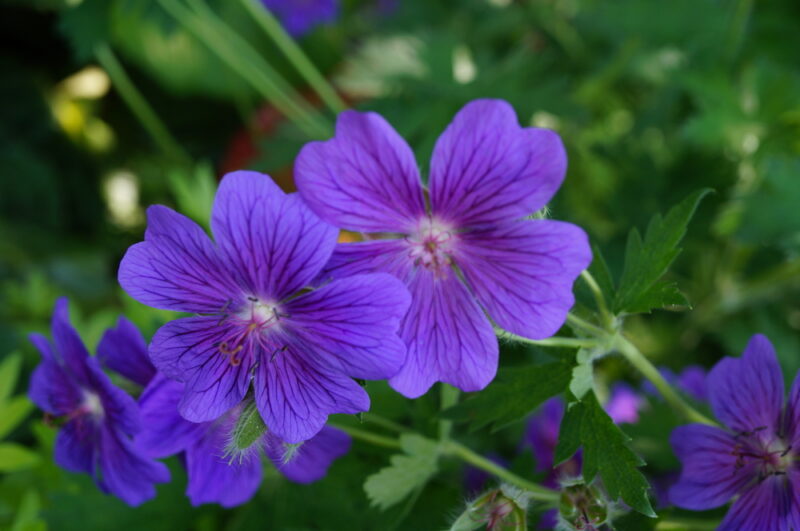
| Scientific name: | Geranium |
| Benefits: | Attracting pests such as Japanese beetles and cabbage worms away from peppers. |
Geraniums are a perfect choice if you’re looking for a plant that will protect your peppers from pests. They act as a diversion plant that will attract pests instead of letting them attack your pepper plant. The pests they attract are Japanese beetles and cabbage worms. While they are excellent at attracting destructive insects that may harm your pepper plant, they are not pollinator-friendly. If you are looking to attract more pollinators in your garden, it would be wise to plant some flowering plants that appeal to bees.
2. Basil
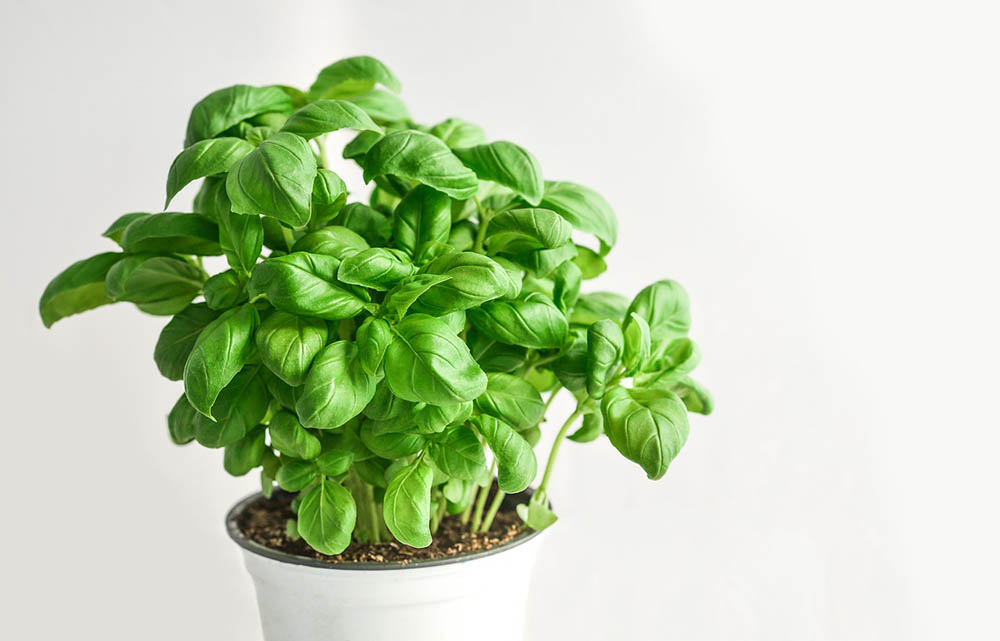
| Scientific name: | Ocimum basilicum |
| Benefits: | Repels pests such as aphids, whiteflies, and hornworms and attracts pollinating insects. |
Basil and peppers are ideal if you’re looking for companion plants to plant in your garden. Since basil and pepper have similar preferences for certain conditions, they go well when grown together. Peppers prefer plenty of sunshine and enjoy the hot weather, which is also ideal for basil. Basil has other benefits, such as being a powerful repellent to many pests. Since it releases a particular fragrance, it repels aphids, hornworms, and whiteflies. Another advantage of basil plants is that they are pollinator-friendly, meaning that planting them near peppers will enhance pollination.
3. Tomatoes
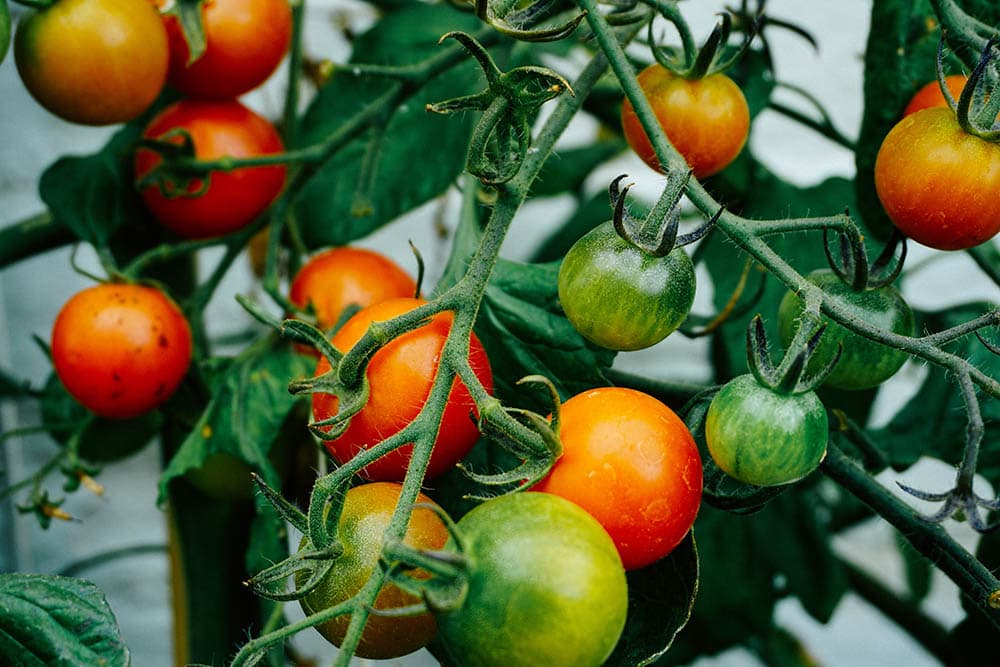
| Scientific name: | Solanum lycopersicum |
| Benefits: | Repels beetles and nematodes and offers excellent shade and protection from sunlight. |
Beetles and nematodes are common pests that attack peppers, which tomatoes are excellent at repelling. These two plants are perfect companions in the same garden bed if provided enough space. It is essential to plant them in different areas in the successive growing season to ensure no diseases can spread between these two plants. Another benefit that tomatoes offer to peppers is shade and protection during warm weather, especially if it grows tall enough.
4. Scallions

| Scientific name: | Allium fistulosum |
| Benefits: | Strong repellent of the five-spotted hawk moth and other pests. |
Scallions or green onions are an excellent addition and easy to grow in any garden. They require minimum effort as they mature quickly and don’t mind being shaded by your pepper bushes. They bring many benefits by planting them next to peppers; the most important benefit is keeping the pests away. Their sulfurous compounds repel very harmful pests away from peppers, such as the five-spotted hawk moths.
5. Eggplants
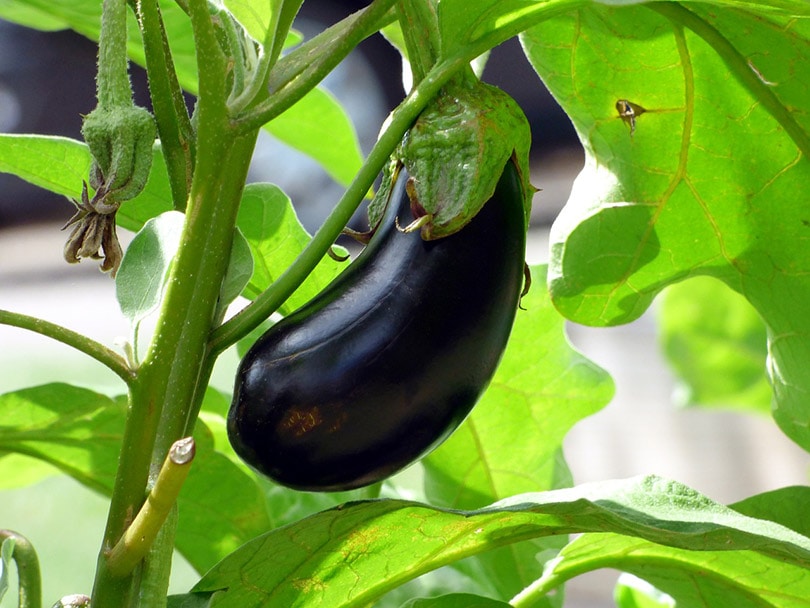
| Scientific name: | Solanum melongena |
| Benefits: | Companion planting of eggplants and peppers helps maximize the yield. |
Since eggplants are a relative of peppers, planting them near each other can bring many benefits. Since these two plants enjoy growing in the same conditions, planting eggplants in the same garden bed will help maximize the yield. It is essential to rotate them each year to avoid attracting any diseases to both these plants.
6. Parsley
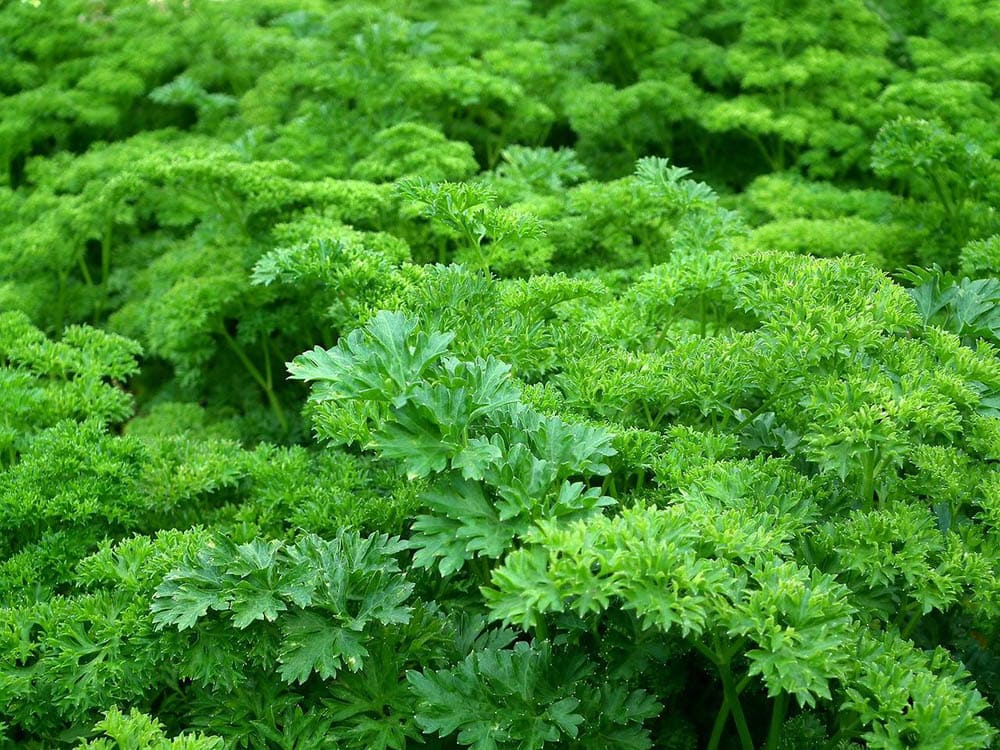
| Scientific name: | Petroselinum crispum |
| Benefits: | The fragrance of the leaves repels pests, and the flowers attract insects such as hoverflies and wasps that feed on pests. |
Parsley, or the Italian herb, has wide varieties. This herb has a strong aroma and fragrance and is used in many popular dishes worldwide. While parsley repels pests with its scent, it also attracts insects such as hoverflies and wasps. These beneficial insects threaten other harmful insects, feasting on aphids, thrips, and many others.
7. Onions and Garlic
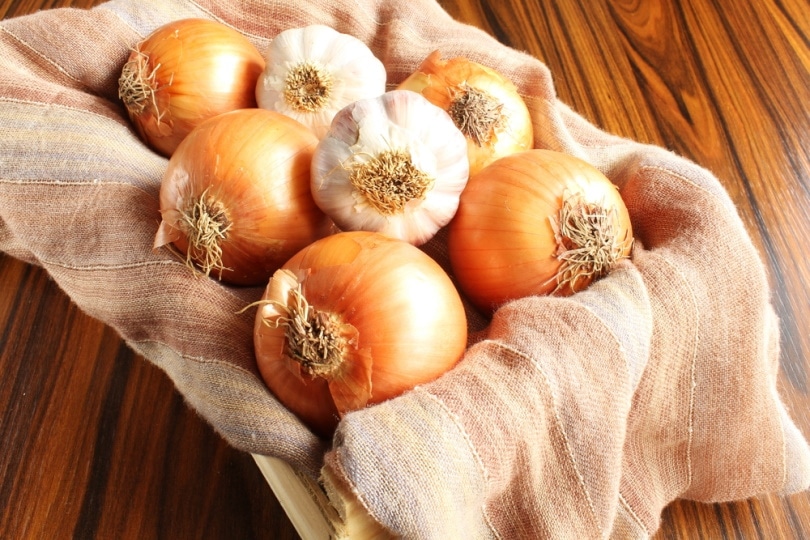
| Scientific name: | Allium cepa and Allium sativum |
| Benefits: | Repellants of fungus and pests such as aphids, slugs, and cabbage worms. |
While both garlic and onion are a great addition to many dishes, they are also excellent at being companion plants. Peppers benefit significantly from having garlic and onions around, mainly because they keep unwanted pests away from peppers. Another superb advantage of garlic is its antiseptic properties, shielding peppers from insects and fungi. Once you plant these two beneficial vegetables in your garden, you will keep away aphids, slugs, cabbage worms, and many others.
8. Marigolds

| Scientific name: | Tagetes |
| Benefits: | They repel nematodes, whiteflies, and aphids. Marigold tea can be used as natural antifungal medicine. |
Marigolds are plants with amazing effects on peppers as companion plants. They improve the yield dramatically and help with reducing pests. They release strong scents that help keep pests like nematodes, whiteflies, and aphids away. Marigold teas also have an excellent effect on the leaves of peppers, preventing the development of certain funguses. They fit in with peppers in the garden bed because they are much shorter and compact.
9. Oregano

| Scientific name: | Origanum vulgare |
| Benefits: | Attracts pollinator-friendly insects such as lacewings. Their larvae help control the number of aphids on pepper plants. |
Oregano is a fragrant yet spicy herb that helps deter pests away from peppers. When oregano blooms, it bears gorgeous white to delicate pink flowers, which are pollinator-friendly. Many insects, such as lacewings, are attracted to these flowers as they are an excellent source of nectar. The benefit of attracting lacewings near peppers is that their larvae can consume thousands of aphids daily. This can work as a natural way of controlling an aphid infestation.
10. Beets
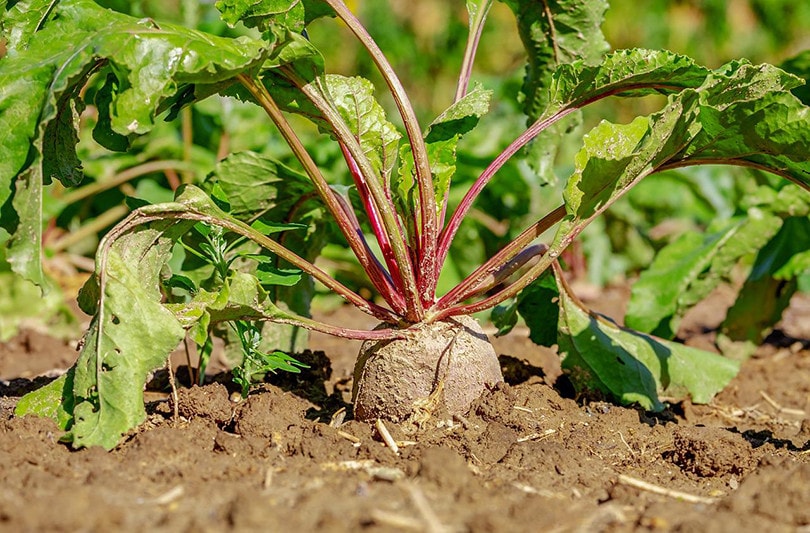
| Scientific name: | Beta vulgaris |
| Benefits: | Help with maximizing the space and loosening the soil around peppers. |
One of the essential benefits that beets bring to peppers is loosening the soil in which peppers grow. These beautiful plants mature quickly, ready for the harvest, just when the slow-growing peppers take off. Their bulbous roots are an excellent addition to any garden bed, maximizing the yield.
Worst Companion Plants
Before choosing companion plants for your peppers, it is vital to research which plants can benefit them and which may have harmful effects. While many companion plants work as an excellent addition to pepper plants, certain plants can only negatively affect peppers’ growth. These plants may share the same predators or attract potential diseases and fungi or tend to take up all the nutrients, preventing peppers from thriving.
- Peas: Add nitrogen to the soil, preventing peppers’ healthy growth.
- Cabbage: Takes up most of the nutrients from the soil.
- Corn: Takes most of the sunlight away from peppers.
- Beans: Takes up most nutrients and add nitrogen to the soil.
- Sunflowers: Takes away most of the sunlight, leaving peppers in the shade.
- Cauliflower: Depletes the soil of essential nutrients.
- Fennel: Attracts many harmful pests.
Final Thoughts
There are always plants that can promote the healthy growth of your peppers, and there are ones that can harm them. For this reason, knowing the best companion plants can be a lifesaver. After reading this valuable list, save it for future reference, as it might come in handy.
Featured Image Credit: Mark Valencia, Pixabay
Contents




